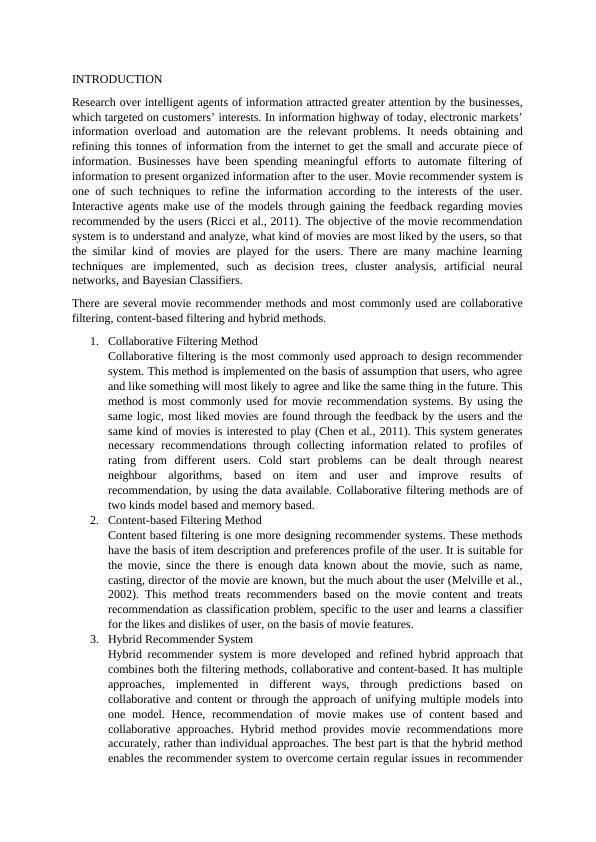Movie Recommender Systems: Collaborative Filtering, Content-based Filtering, and Hybrid Methods
Added on 2023-03-30
2 Pages659 Words317 Views
End of preview
Want to access all the pages? Upload your documents or become a member.
Collaborative Filtering Model - PDF
|63
|1824
|21
Building a Simple Recommender System in Google Spreadsheet for Desklib
|4
|1740
|400
Literature Review on Deep Learning for Recommendation Systems
|5
|1450
|360
Investigating the effectiveness of profile injecting attack against recommender system
|11
|2236
|293
Recommendation System for the E-Commerce Businesses
|15
|3700
|211
ITC561 - Cloud Computing Classifications
|10
|2246
|76

